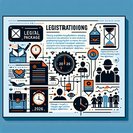
Australia’s two busiest gateways endured another bruising day on 16 November as storms over the east coast collided with acute air-traffic-controller shortages. By dusk, Jetstar, Virgin Australia, Air New Zealand and United Airlines had cancelled 16 services and logged more than 100 delays—some exceeding three hours—at Sydney Kingsford-Smith and Melbourne Tullamarine.
Airservices Australia confirmed that an unexpected round of sick leave reduced Sydney tower staffing below minimum levels just as a fast-moving low-pressure system forced single-runway operations. Flow-on congestion quickly rippled through Melbourne, Brisbane and Adelaide, severing same-day business connections to Auckland, Wellington and Los Angeles.
![Severe weather and staffing shortages wipe out 16 flights, delay 100-plus at Sydney and Melbourne]()
Travellers posted images of departure boards lit with red ‘cancelled’ notices, while Qantas lounges overflowed. Airlines offered fee-free ticket changes but warned that peak-season load factors mean many passengers will not be reaccommodated for 24–48 hours. Hotels near both airports reported near-full occupancy by evening.
For corporate-mobility teams, the disruption underscores the need for resilient itineraries ahead of the Christmas rush. Travel-management companies advise booking the first flight of the day where possible and building in at least a four-hour buffer for trans-Tasman connections. Portable travel-insurance policies that cover weather and ATC delays are once again a must-have.
The incident also highlights systemic ATC staffing challenges. A 2025 Senate inquiry found Airservices faced a 9 per cent controller shortfall despite aggressive hiring. Unions want additional training intakes funded in the May 2026 budget, warning that Australia risks more ‘volcano-style’ meltdowns unless head-count keeps pace with rebounding traffic.
Airservices Australia confirmed that an unexpected round of sick leave reduced Sydney tower staffing below minimum levels just as a fast-moving low-pressure system forced single-runway operations. Flow-on congestion quickly rippled through Melbourne, Brisbane and Adelaide, severing same-day business connections to Auckland, Wellington and Los Angeles.

Travellers posted images of departure boards lit with red ‘cancelled’ notices, while Qantas lounges overflowed. Airlines offered fee-free ticket changes but warned that peak-season load factors mean many passengers will not be reaccommodated for 24–48 hours. Hotels near both airports reported near-full occupancy by evening.
For corporate-mobility teams, the disruption underscores the need for resilient itineraries ahead of the Christmas rush. Travel-management companies advise booking the first flight of the day where possible and building in at least a four-hour buffer for trans-Tasman connections. Portable travel-insurance policies that cover weather and ATC delays are once again a must-have.
The incident also highlights systemic ATC staffing challenges. A 2025 Senate inquiry found Airservices faced a 9 per cent controller shortfall despite aggressive hiring. Unions want additional training intakes funded in the May 2026 budget, warning that Australia risks more ‘volcano-style’ meltdowns unless head-count keeps pace with rebounding traffic.





